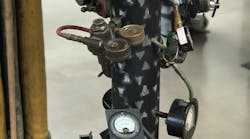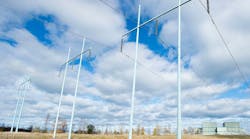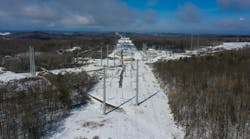Ahmed Mousa is presenting at our virtual event, Black Sky Hazards & Grid Resilience, November 16-17, 2021. This event is free for utilities!
SCADA is a fancy word that stands for Supervisory Control And Data Acquisition; nevertheless, SCADA is basically getting data from the field and controlling the field equipment.
With respect to viewing data, there are mainly two customers:
- Operations: operators are busy operating the system, thus they request/require the least amount of data, usually current (amp) flow and voltage and equipment status. They live in the moment, thus they are focused on overloads, voltage violations and trip-outs; in many scenarios, they only view the data after a certain alarm has been triggered, i.e. an alarm for a feeder exceeding 90% of its normal ratings, low or high voltage alarm, etc..
- Non-operations, mainly planning: if it is up to planners, they will request every possible data point there is; at a minimum: real/reactive power, voltage, current, power factor (can be calculated) and voltage.
With respect to the control aspect, that is granted solely to energy control center operators, no one else; otherwise, it will be chaos.
The 2003 blackout was a major change in the SCADA world, especially with respect to the transmission system; where certain transmission owners transformed from having absolutely minimum data to having PMUs (phasor measurement unit) that have multiple samples per second. PMUs are now installed at critical transmission stations, i.e. stations that connect to other utilities, connect ISOs (Independent System Operators) together or supply large amount of loads, connected to large generators, etc.
Superstorm Sandy was another wakeup alarm that transformed the distribution world, mainly due to the fact that distribution feeders were not equipped with SCADA and thus the lack of knowledge with respect to the loading on the feeders right before Sandy, which hindered efforts to restore certain parts of the troubled areas.
Before the widespread of use SCADA, we were blessed by ignorance, since we knew so little about different points in the system. Now, with the digitalization of the grids, we are bombarded by data, too much data, which triggered the need for reports and large data analytics, i.e. rather than reviewing the power factor for a 1,000 feeder, we can create reports that only portray the list of feeders with power factor less than 0.8 (think of it as a filter or report by exception). From a transmission perspective, during normal conditions, we need to monitor the voltage during peak and light load, thus creating a report that monitors the transmission voltage as they approach 1.05 p.u. or 0.95 p.u.(+/- 5% of nominal voltage) will be useful rather than continuous monitoring.
Recently, due to the widespread deployment of distributed energy resources (DERs), the distribution system has been significantly impacted (transmission in certain areas) and thus there is a need for telemetry, detailed telemetry. Being that solar and wind are greatly impacted by the weather, it is crucial to measure the voltage at various points, especially near large solar/wind farms. DERs impact the voltage and sudden changes in weather, i.e. fast moving clouds or sudden wind speed change will have an impact on the circuit voltage. Areas with large DER penetration may result in station backfeed and excessive transformer load tap changer (LTC) movement. Back to the digital world, a report showing the number of LTC movement on a daily or weekly basis will be an important one. A report that compares LTC movement for areas with large DERs penetration and/or backfeed to other stations with minimal DERs will be vital.
In summary, with the widespread appearance of DERs, relays replacement, weather pattern changes and our growing attachment to reliable electric service, utilities must continue to install more advanced metering, SCADA for short.
Some view SCADA as a drawback since they can no longer plead the fifth, they now know a lot more about the system and must act when the meters show a system condition that requires follow-up, i.e. low voltage in certain parts of a distribution circuit compared to the old days of ignorance.



